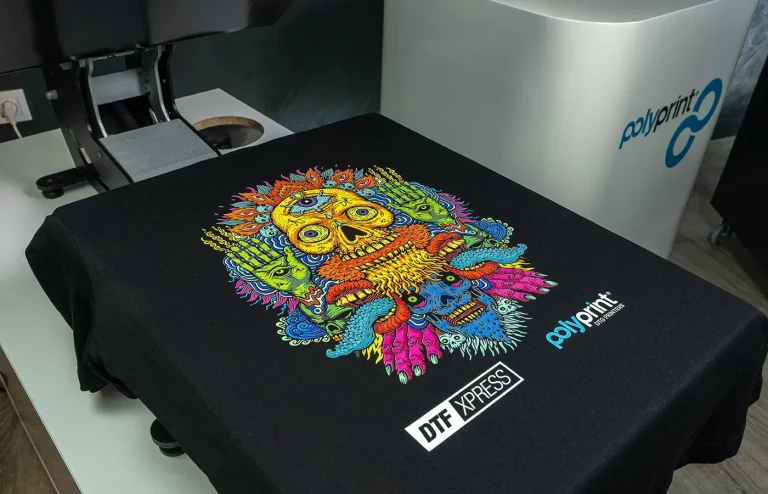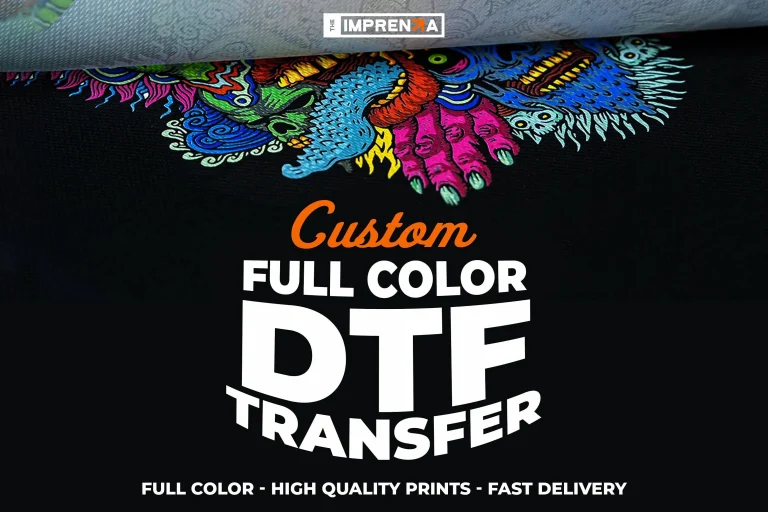Mastering DTF Transfers: A Step-by-Step Guide
Mastering DTF transfers is a vital skill for anyone looking to excel in fabric printing. This innovative process, known as Direct-to-Film printing, allows you to create stunning designs that pop with color and detail. By utilizing the DTF printing process effectively, you’ll be able to apply intricate patterns and vivid images onto a variety of fabrics. Essential steps such as DTF design preparation and proper heat press application will significantly enhance the quality of your finished products. Whether you’re creating custom apparel or promotional items, understanding how to master DTF transfers can transform your printing game and Open new avenues in your artistic expression.
The art of DTF transfers, often referred to as Direct-to-Film printing, brings a modern twist to traditional fabric decoration techniques. This method simplifies the process of transferring designs onto various textiles with exceptional brightness and precision. By preparing your DTF designs meticulously and applying them with a heat press, you can achieve professional-grade results that stand out in the marketplace. As you delve deeper into the DTF printing process, you’ll discover that the fusion of creativity and technology plays a key role in producing impressive textile graphics. Embracing alternative approaches to DTF printing can greatly enhance your efficiency and elevate the impact of your final products.
The Basics of DTF Transfers: What You Need to Know
DTF transfers, or Direct-to-Film transfers, are rapidly becoming a favorite option for printing on fabrics due to their versatility and effectiveness. Unlike traditional printing methods, DTF transfers involve printing designs onto a special film that can then be transferred to your fabric of choice. This method allows for high-resolution images with vibrant colors, making it perfect for arts and crafts, fashion apparel, and promotional merchandise. To start your DTF venture, it’s essential to gather the right materials: DTF ink, transfer film, a compatible DTF printer, and a heat press machine.
Understanding the components of the DTF printing process is vital for newcomers. The DTF printer employs specially formulated inks designed to adhere to the transfer film. When printed, the design is coated with a powder adhesive that bonds the ink during the heat application. This process not only enhances color vibrancy but also provides longevity to the prints. By choosing the right garments, especially those made from cotton or polyester blends, you can achieve optimal results when applying your DTF transfers.
Mastering the DTF Printing Process
Mastering DTF transfers is both an art and a science. The first step in this journey is to prepare your design meticulously. Creating your artwork in vector format ensures scalability without losing quality, while color separation in CMYK mode helps in achieving precise color output. These steps are crucial as they greatly influence the quality of the final print. Performing test prints allows you to catch any possible issues with color fidelity and design details before committing to a full production run.
Additionally, achieving the best results in the DTF printing process also involves attention to detail during the printing and heat transfer stages. After printing the design onto the film, applying the adhesive powder evenly while the ink is still wet ensures a strong bond. Using a heat press for the transfer requires precise settings; typically, applying heat at 160-170°C (320-340°F) for 10-15 seconds will guarantee that the transfer adheres properly. This phase is essential in ensuring that your DTF transfers are durable and maintain their vibrancy through multiple washes.
Tips for Effective DTF Design Preparation
Preparing your design for DTF printing involves a series of crucial steps that significantly impact the final product. Begin by working in a vector-based application such as Adobe Illustrator, which allows you to create high-resolution designs that retain their clarity at any size. Following this, ensure that your design is color-separated and uses the CMYK color model, as mismatched colors can lead to disappointing results once printed.
Another key aspect of design preparation is testing your prints on DTF transfer film. This step not only helps in verifying color accuracy but also allows for adjustments before moving onto production. Test prints can reveal how colors appear on fabric and help fine-tune details that may otherwise get lost in larger runs. By taking these precautions, you can enhance the quality of your DTF transfers, making sure they stand out and meet your expectations.
The Importance of Heat Press Application in DTF Transfers
Heat press application is a pivotal stage in the DTF transfer process that must not be overlooked. This technique is responsible for transferring designs onto fabrics with precision and durability. By applying the right amount of heat and pressure, the adhesive powder melts and bonds the ink to the fabric, solidifying the transfer. The standard temperature range of 160-170°C (320-340°F) is recommended, and maintaining this accuracy is vital to avoid either under-application, which can lead to peeling, or over-application, which can burn the fabric.
Incorporating proper time management during the heat application phase is equally important. Timing of around 10-15 seconds ensures that the image adheres well without damaging the underlying fabric. After transferring, allowing the design to cool before removing the film further helps in enhancing the durability and appearance of the DTF transfer, ensuring a professional finish that withstands wear and washes.
Caring for Your DTF Transfers: Post-Application Best Practices
Once your DTF transfer has been applied, care instructions play a crucial role in maintaining the quality of your prints. To prolong the design’s lifespan, it is essential for wearers to wash garments inside out. This technique protects the print from agitation during the wash cycle, which can otherwise cause wear and fading. Additionally, it’s best to avoid harsh detergents and bleach, as these can damage the integrity of the DTF inks and lead to diminished color vibrancy and print quality.
Educating customers on how to care for their printed garments is as important as the printing process itself. Providing guidance on washing temperatures and drying methods can prevent unforeseen damage. Encouraging air drying, instead of tumble drying, is an excellent tip to maintain the fabric print quality. By implementing these practices, both producers and consumers can ensure that their DTF transfers look fresh and vibrant for as long as possible.
Emerging Trends in DTF Transfers: What to Look Out For
As the DTF printing industry continues to grow, new trends are emerging that offer exciting opportunities for designers and businesses alike. One notable trend is the resurgence of neon and fluorescent colors, which appeal to a younger, fashion-conscious demographic. These vibrant hues can bring a fresh, eye-catching element to designs, drawing attention and standing out in a crowded market. Designers using DTF printing should explore these color palettes to enhance their collections.
Another trend is the rise in demand for complex patterns, which allows for greater creativity and artistic expression. With advancements in DTF technology, creating intricate designs has become more feasible and accessible. Moreover, the increasing interest in sustainable practices is shaping the future of DTF transfers, prompting manufacturers to explore eco-friendly inks and materials. Keeping abreast of these trends is crucial for anyone involved in DTF printing, as it opens doors to innovative design possibilities and customer engagement.
Frequently Asked Questions
What are the essential materials needed for mastering DTF transfers?
To successfully master DTF transfers, you will need DTF ink, transfer film, a DTF printer, a heat press machine, and suitable garments like cotton or polyester blends. These materials are key in achieving vibrant and durable prints.
How important is design preparation in the DTF printing process?
Design preparation is crucial when mastering DTF transfers. Starting in a vector format, ensuring proper color separation in CMYK, and conducting test prints are all vital steps that enhance color accuracy and quality in the final product.
What are the steps involved in the DTF printing process from design to application?
The DTF printing process involves creating a design, printing it onto transfer film, applying powder adhesive, curing the transfer, and then using a heat press for application. Each step is essential to ensure the design adheres properly and is durable.
How can I ensure that my DTF transfers last longer after application?
To maintain the quality of your DTF transfers, allow them to cool before peeling off the film and advise washing the garments inside out with mild detergents. These practices help preserve vibrancy and ensure the durability of the printed designs.
What temperature and time settings should I use for heat pressing DTF transfers?
When applying DTF transfers with a heat press, set the temperature between 160-170°C (320-340°F) and apply for about 10-15 seconds. This specific setting is critical for ensuring a proper and lasting bond.
What are some emerging trends in mastering DTF transfers for 2025?
Emerging trends in DTF transfers include the use of neon and fluorescent colors, intricate patterns, and a shift towards sustainable inks and materials. These trends reflect current consumer preferences and the ongoing evolution of DTF printing technology.
| Key Points | Description |
|---|---|
| Understanding DTF Transfers | DTF transfers are a method of applying vibrant designs onto fabrics using special ink printed on film and then transferred using heat and pressure. |
| Key Materials | DTF Ink, Transfer Film, DTF Printer, Heat Press Machine, Garments (like cotton or polyester blends) are essential for the process. |
| Design Preparation | Involves creating vector designs, proper color separation, and performing test prints for accuracy. |
| Application Process | Includes printing the design on transfer film, powder application, and transferring to fabric under heat. |
| Post-Transfer Care | Cooling and peeling off the film, plus laundry instructions to maintain the quality of the transfer. |
| Emerging Trends | Trends include neon colors, complex patterns, and the use of sustainable inks and materials in DTF printing. |
Summary
Mastering DTF transfers is key to thriving in today’s fabric printing industry. This technique not only provides vibrant and detailed designs but also opens doors to creative expression through various styles and trends. Essential processes such as design preparation, accurate printing, and careful application are fundamental to achieving high-quality results. As technology and consumer demands evolve, staying attuned to emerging trends and maintaining proper care for your DTF prints will enhance their longevity and aesthetic appeal. Therefore, delve into the nuances of mastering DTF transfers to elevate your printing projects and stand out in a competitive market.





